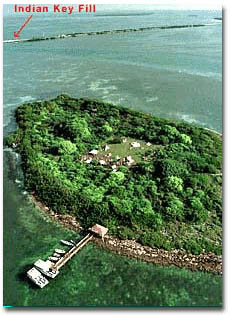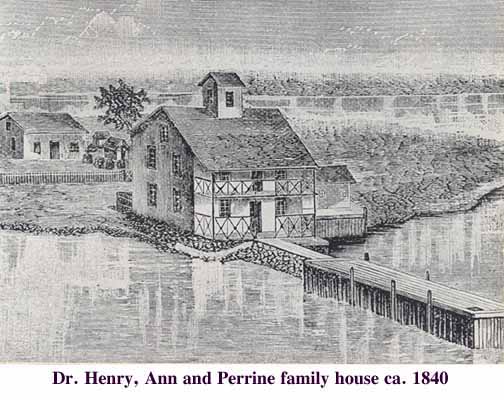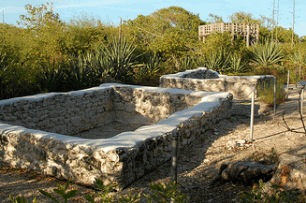Nice weekend and now back to work. This is a chilly morning unless you live up north and then it would be a breath of warm air.
OK you know what’s next

JAMIE FRASER FROM EPISODE 107
Today we’re doing another Florida Key—for small places in Florida….no one actually lives there anymore, it’s now a State Park but it has been the place of many events a lot of them involving deaths.

Within sight of Indian Key Fill east of US 1 lies Indian Key. The island is now a State Park. (http://www.floridastateparks.org/indiankey/) It can be reached by boat or you can take tours of the island (http://www.robbies.com/statetours.htm) (http://www.see-florida.com/florida-keys/things-to-do/indian-key-and-lignumvitae-key-tours).

The key is located four miles east of Alligator Reef Lighthouse,
“a nine-legged light house marking the northern keys reef, the most developed of this areas reefs. The are has a history of tragic events from shipwrecks to pirate attacks ….Nearby…Matecumbe keys possibly named from the Spanish matar hombre “to kill a man.” (FLORIDA LIGHTHOUSES by Kevin M. McCarthy)

The island is only 10 acres but it has seen more than its share of Florida history. (LONELY PLANET: FLORIDA)
.jpg)
One of the earliest accounts of the area seem to be the shipwreck in 1733 of 19 Spanish treasure ships on the reef here. Account say that many of the survivors were shipwrecked here until rescued by other Spanish vessels. http://en.wikipedia.org/wiki/Indian_Key,_Florida On charts dating to 1742 it is call Cayuelo de las Matanzas (slaughters) and is felt by some to be the location of a massacre of a shipwrecked French crew and its passengers–prisoners meant to be laborers in the new world–by Indians (Calusa) with the blessing of the Spanish. http://www.keyshistory.org/indiankey.html Later in 1743 Spanish missionaries stopped her in looking for a place to develop a permanent site but eventually moved on to the Miami area. http://www.keyshistory.org/histindians.html

In the 1800s the island with it’s location near the deadly reefs and close to Matecumbe Key which had fresh water resources, something not common I the Keys, made it an ideal location for pirates, smugglers, privateers and all sorts of seamen to rendezvous. This was the time before lighthouses and Key West began to develop a booming business in wrecking.—-the act of boarding and salvaging the sinking ship. If you visit Key West you will see large houses built with the proceeds of this profession.

One of these wreckers was John Jacob Housman, born in New York , he came to Key West and being a sea captain decided to go into wrecking, but he was late to it and was never ever able to establish himself in Key West. About 1831 when that didn’t work out he moved north to Indian Key which he purchased and began developing. Indian Key was much closer the reefs and offered easier access, which was very important as the first to board the vessel got the major share of the profits.

Over the next few year Housman’s wrecking business thrived and he built a center with wharves, warehouses, workshops and several cottages. He managed his own fleet of wreckers (4 ships) as well as about 12 slaves and kept the island under his firm control. Eventually there was a post office, paved streets, even a town square. The town boasted a busy hotel the Tropical as well. By 1936 with the help of a friend in the territorial legislature he was able to get Indian Key named the county seat of the newly formed Dade Co. , the first step in what he hoped would make his little isle ever over Key West in authority and wealth. During this golden age of Indian Key Audubon (of bird painting fame visited the island) and Amasa Goodyear (father of Charles the man who invented vulcanized rubber) worked here as a bartender according to some previous record I have read and reportedly died here of Yellow Fever.

IN 1936 the Seminole War began which would have further impact later. Then in 1838 it all started to go wrong. Housman, not known for his stellar character was found to be embezzling and lost his wrecking license which was his big money maker. Then in 1840 (August 7) the Indians attacked. By morning Housman and his wife had escaped but 13 – 18 (depending on the source) died and the raiding party burned the buildings to the ground. Among the dead was Dr. Henry Perrine a noted Botanist for whom Perrine, Fl. was named. (PLACES IN THE SUN by Bertha E. Bloodworth and Alton C. Morris) This marked the end of Housman who returned to Key West and went to work as a seaman on a wrecker. He later died (about a year) on a freak accident while working in the wrecker and his wife had his body taken back to Indian Key. Later the grave was vandalized and the remains stolen.

The island never recovered though people continued to die here: 50 during an outbreak of Malaria in a facility operated here by the navy. On Labor Day 1935 one of the worst hurricanes ever came through the Keys and one of two brothers who were operating a fish camp here decided to stay and secured himself to a cistern, where he was found dead two days after the storm. (KEY WEST & THE FLORIDA KEYS by June Keith)

Today you can walk down the “streets” with the ruined building’s foundations while park rangers tell you the story of this deadly island covered with tall century plants and other tropical growth. (HIDDEN FLORIDA by Candace Leslie et al.)

There’s something inherently wrong with the human personality. There’s an evil side to it. One of the things that horror stories can do is to show us the archetypes of the unconscious: we can see the dark side without having to confront it directly. Also, ghost stories appeal to our craving for immortality. If you can be afraid of a ghost, then you have to believe that a ghost may exist. And if a ghost exists, then oblivion might not be the end. Stanley Kubick
